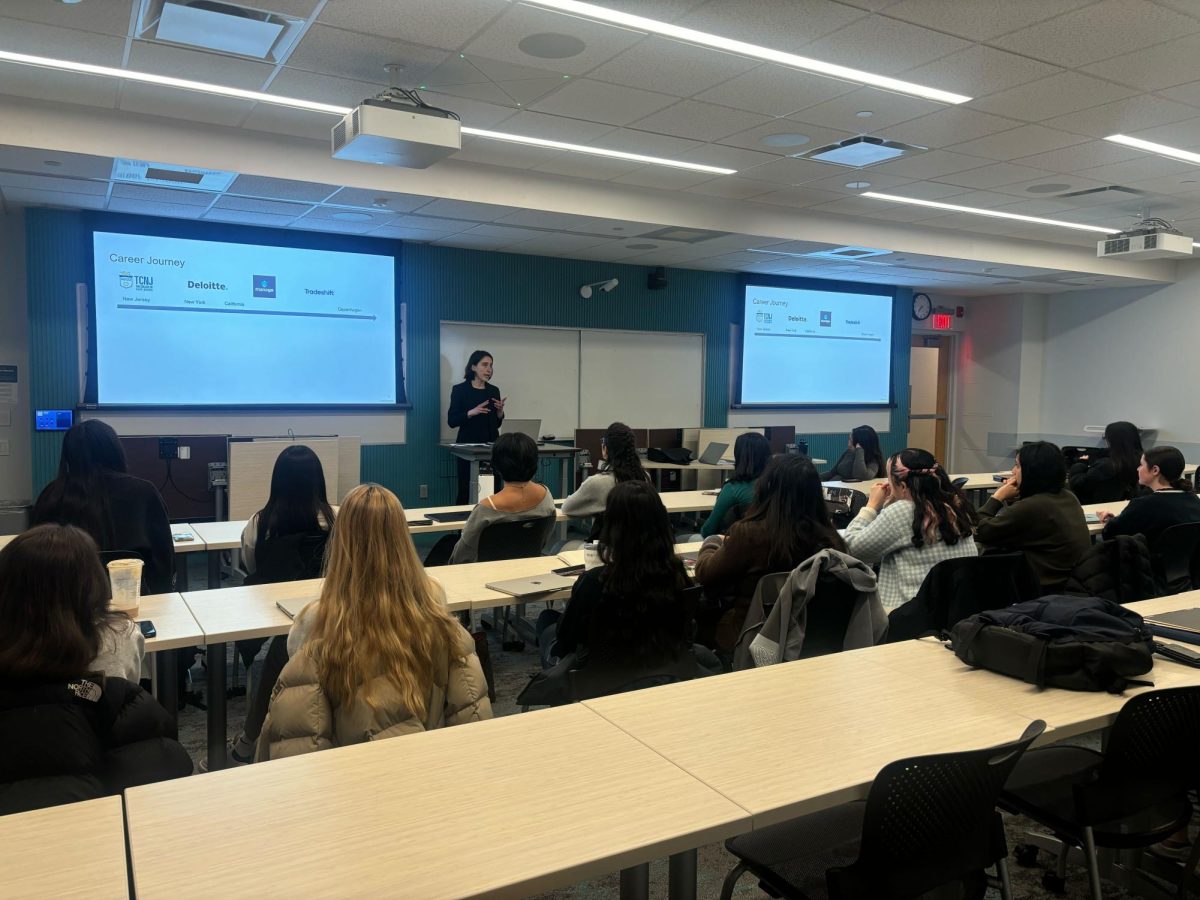Fast, intricate guitar riffs and a thumping rhythm filled the air at afterHOURS Friday night.
“Hips Don’t Lie,” co-sponsored by the Latin American Student Organization (LASO), the Latino/a Student Cultural Center (LSCC) and the Society of Hispanic Professional Engineers (SHPE), combined two different cultures by showcasing both flamenco and belly dancing.
“We really wanted to feature flamenco because it related to us, since it started in Spain, but it’s something different,” said LASO vice-president Victor Morales. “As for the belly dancing, all the girls [in LASO] were asking about it. It was something they really wanted.”
The night started with flamenco dancer Lauren O’Donnell, a frequent Boston performer who first began dancing flamenco in 2002. She was accompanied by guitarist John Smathers and percussionist John Kerr, who played a flamenco drum called a cajon.
Dressed in a long, ruffled brown skirt and donning a green flower in her tightly pulled back hair, O’Donnell turned and stamped her feet at a rapid pace, smiling under the soft glow of the lights.
After performing a few songs, O’Donnell gave the audience a mini-lesson on flamenco. O’Donnell demonstrated everything from how to flick the wrist to how to correctly stamp your feet.
She ended her set by giving a short summary about flamenco, including that it originated from the Spanish community, Andalusia, that Gypsies were partly responsible for spreading the dance throughout Europe.
Sardis, a professional belly dancer who has her own troupe in the Boston area called Al-Jawary Al-Hessan, performed next. A Colorado native, Sardis now lives in Somerville and has been studying belly dancing for eighteen years.
Belly dancing is a dance that originates from the Middle East. Sardis said it is a social dance that traditionally acts as a link between the audience and the dancer.
“The audience gives me energy,” she said. “[Belly dancing] is a very interactive dance. The dancer performs, and then that’s the call for the audience to get up and dance after.”
Sardis was enveloped in a long, red veil that covered her entire body. She removed the veil to reveal a long sword being balanced on top of her head while she simultaneously gyrated across the stage. She soon moved the sword to her hip, where she balanced it with ease as she quickly spun around, becoming a dazzling blur of skin and sequins.
Her next few numbers included props like cymbals, red and white metallic canes and a bevy of male and female audience members who were glad to become “sultans” and “harem girls.”
Sardis said she hoped the performance would inspire students to learn more about the dance.
“Hopefully they will want to take classes, or go to a club and learn from the people there,” she said. “The Arabic people are not the enemy, they’re our friends. Dancing is a good way to communicate.”
After the performances were done, DJ Dres spun reggaeton, Latin and hip-hop music until 2 a.m. so the students could put their new dancing skills to use.









